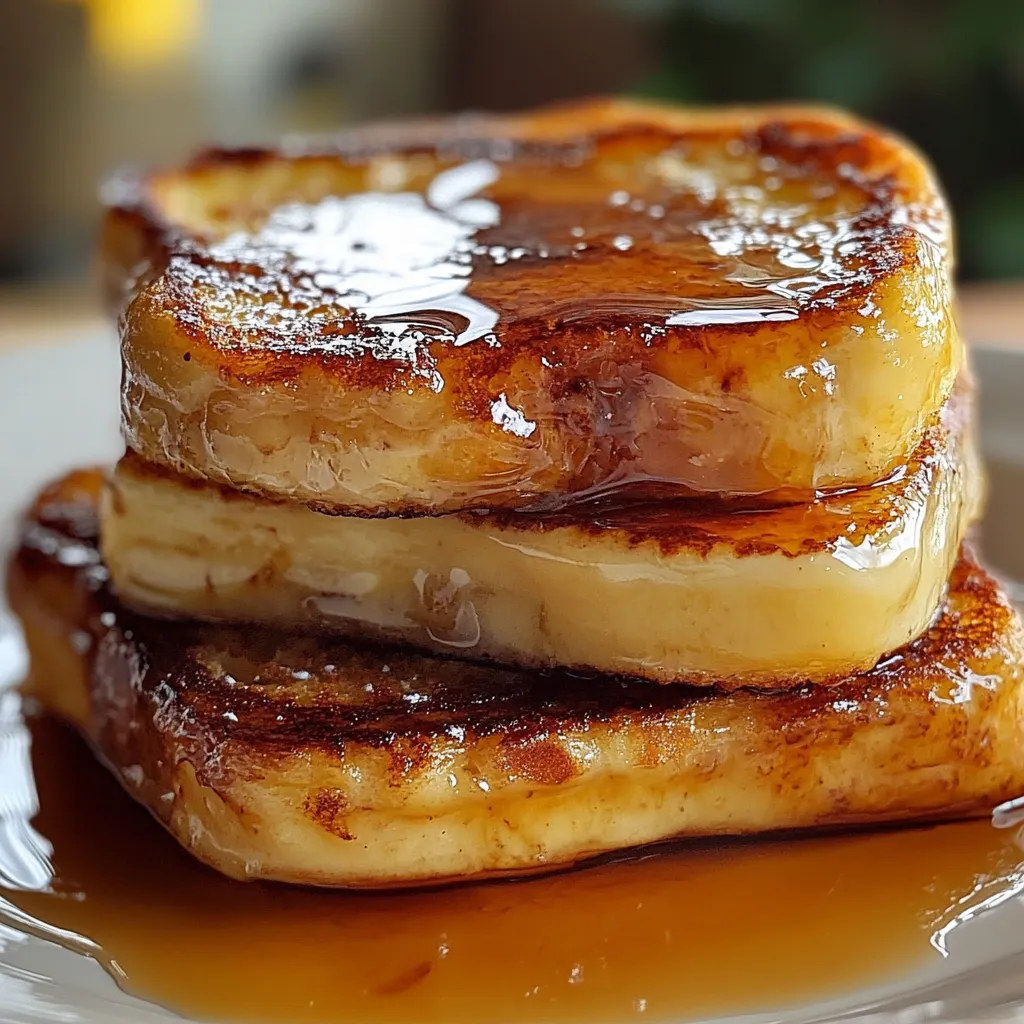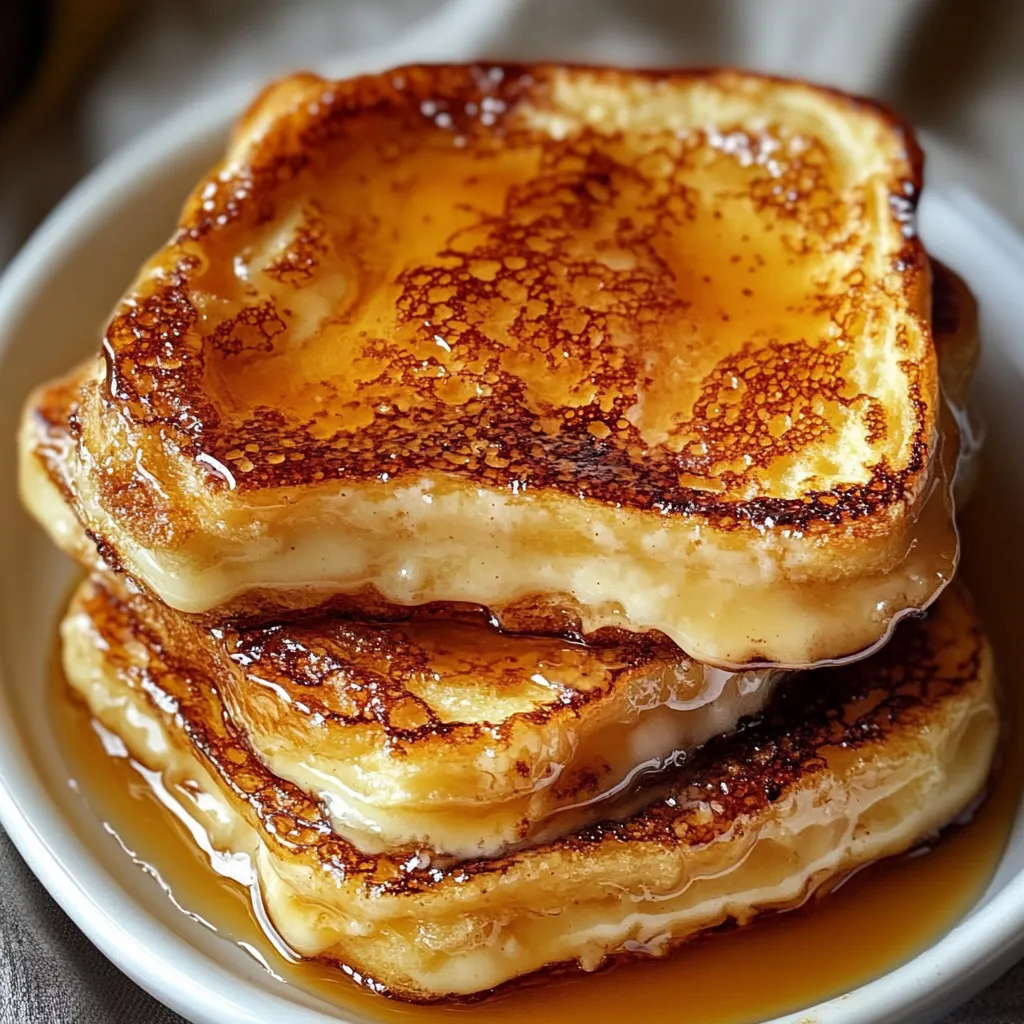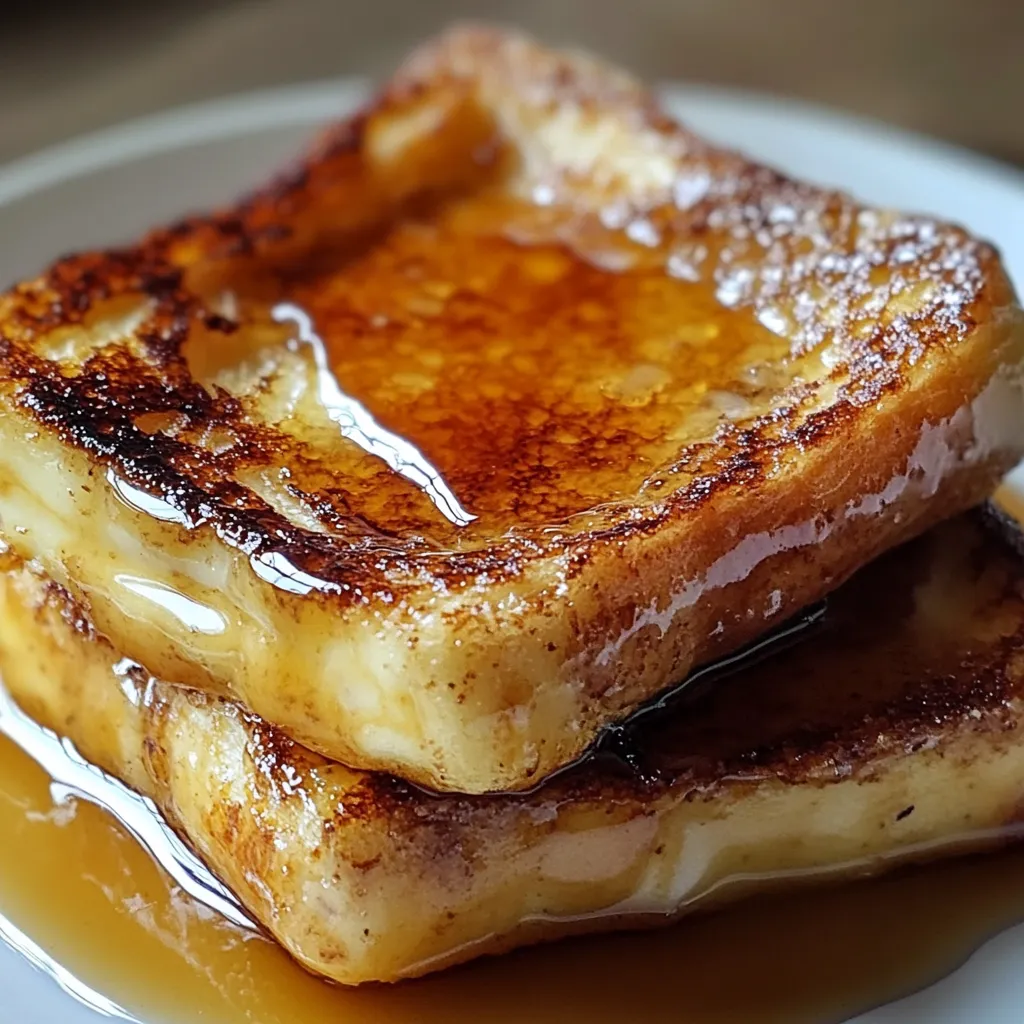 Pin it
Pin it
Transform simple brioche into an extraordinary breakfast casserole that combines the creamy richness of crème brûlée with classic French toast. Each slice delivers a perfect contrast between caramelized sugar base and custardy bread, creating a breakfast experience that rivals any fancy brunch spot.
The first time I served this at a holiday breakfast, guests thought it came from a high-end bakery. Now it's our Christmas morning tradition, with the heavenly aroma of caramel and vanilla waking everyone up.
Key Ingredients for the Best Flavor
- Brioche Bread: Soft and buttery with a light texture that soaks up custard while staying rich and tender.
- European Butter: High in fat and extra creamy, melting smoothly for a rich and silky caramel.
- Dark Brown Sugar: Packed with molasses for a deep caramel taste and a soft, chewy texture.
- Pure Maple Syrup: Grade A dark syrup adds natural sweetness with a rich, complex flavor.
- Fresh Eggs: Local eggs with deep yellow yolks create a smooth, velvety custard that binds everything together.
- Premium Vanilla: Pure Madagascar vanilla brings warmth and enhances all the flavors with its natural sweetness.
Creating Breakfast Excellence
- Caramel Foundation:
- Begin by melting butter slowly over medium heat. Add brown sugar and maple syrup gradually, stirring until completely smooth and slightly darkened. Pour immediately into prepared baking dish.
- Bread Preparation:
- Slice brioche into thick, uniform pieces, allowing slight staleness for better absorption. Arrange carefully over caramel, creating an even layer with slight overlap.
- Custard Development:
- Whisk eggs until completely smooth before incorporating half-and-half. Add vanilla and salt, creating a silky mixture that will transform into creamy custard.
- Strategic Assembly:
- Pour custard slowly over bread, ensuring even distribution. Press gently to encourage absorption while maintaining bread structure.
- Overnight Magic:
- Cover tightly and refrigerate 8-12 hours, allowing bread to fully absorb custard while developing deep flavor.
 Pin it
Pin it
Through countless brunches, I've discovered that using slightly stale bread creates the perfect texture. One memorable Easter brunch taught me that bringing the dish to room temperature before baking ensures even cooking.
Perfect Presentation Strategy
Serve directly from baking dish, allowing caramel to pool naturally. Create visual interest with fresh berries and mint sprigs. Provide warm maple syrup in an elegant pitcher for extra indulgence.
Creative Variations
Transform basic recipe by experimenting with different breads—try challah or croissants. Create an orange-scented version with zest in custard. For special occasions, add a layer of cream cheese between bread slices.
Storage Success
Store unbaked casserole covered in the refrigerator for up to 24 hours. Once baked, keep leftovers covered and reheat individual portions in a 350°F oven until warm.
 Pin it
Pin it
After perfecting this French toast through countless special occasions, it's become more than just breakfast—it's our celebration tradition. The way it combines simple ingredients with careful technique creates something truly extraordinary. Whether served for a holiday gathering or special brunch, this dish proves that breakfast can be both convenient and luxurious.
Frequently Asked Questions
- → Can I use regular sandwich bread instead of brioche?
- While you can use regular bread, brioche or challah are recommended as they're richer and sturdier, holding up better to overnight soaking.
- → What if I don't have half-and-half?
- You can substitute with equal parts whole milk and heavy cream, or just use whole milk for a lighter version.
- → Can I prepare this more than one night ahead?
- It's best not to soak for more than 12 hours as the bread can become too soggy. Stick to 6-8 hours for optimal texture.
- → Why does the dish need to come to room temperature before baking?
- Letting it warm slightly ensures even baking and helps prevent the dish from cracking due to temperature shock.
- → How do I know when it's fully baked?
- The top should be golden brown, the edges should be bubbling with caramel, and a knife inserted in the center should come out clean.
